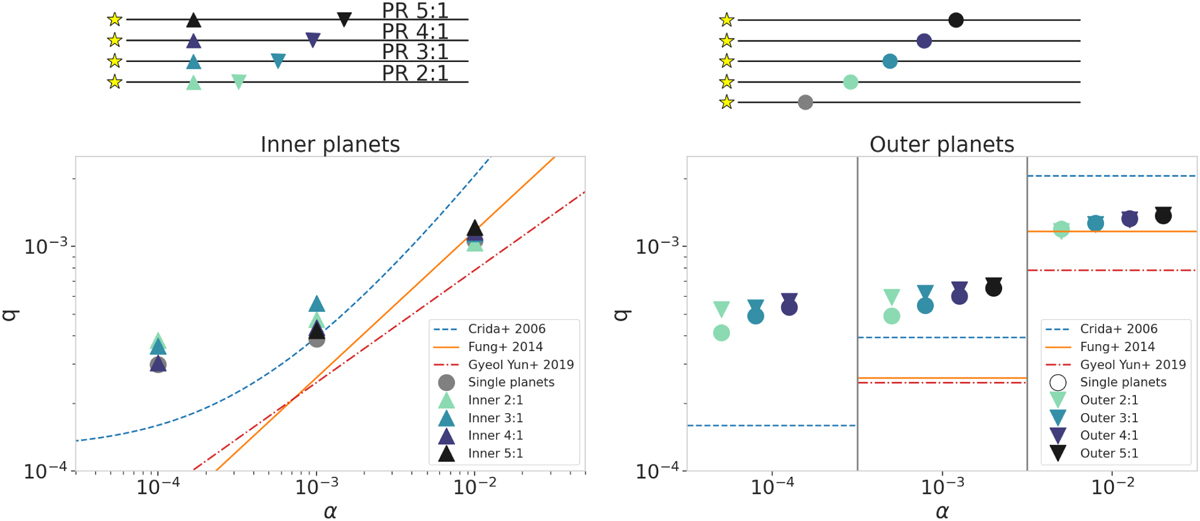Fig. 9

Download original image
Gap-opening mass as a function of the viscosity for different criteria and our simulations, as in Bergez-Casalou et al. (2020). In the left panel, we show the gap opening masses of the inner planets in the two-planet case compared to the single planet cases located at the inner position. The outer planet cases are shown in the right panel. In each panel, the lines represent the different gap-opening criteria from the literature: Crida et al. (2006) in dashed blue, Fung et al. (2014) in solid orange, and Gyeol Yun et al. (2019) in dashed-dotted red. As shown with the schematics above the panels, the two-planet cases are represented by triangles (upward for the inner planets and downward for the outer planets), and the single planets are represented by circles. The inner single-planet case is shown in gray, and the colored circles correspond to the colors of the outer positions in each configuration. For clarity, in the right panel, the viscosity is divided into discrete intervals, allowing us to compare the gap opening mass at one given viscosity in the different configurations. The gap opening masses of the inner planet are barely impacted by the presence of a second outer planet. On the other hand, at low viscosity, the closer the planets are to each other, the higher the gap opening mass is compared to the single-planet case.
Current usage metrics show cumulative count of Article Views (full-text article views including HTML views, PDF and ePub downloads, according to the available data) and Abstracts Views on Vision4Press platform.
Data correspond to usage on the plateform after 2015. The current usage metrics is available 48-96 hours after online publication and is updated daily on week days.
Initial download of the metrics may take a while.


